Reports suggest that of the more than 25 million animal species on Earth, most are vulnerable, and face a potential risk of becoming endangered or extinct due to human-related circumstances such as the consumption of wildlife or habitat destruction.
Among these are an even more vulnerable sub-group of endangered species. Listed on the IUCN (International Union for Conservation of Nature) Red List, these species face an extremely high risk of going extinct in the wild.
How many endangered animals are there in the world?
According to recent statistics, there are currently 7.079 animal species classified as critically endangered. This means they are at great risk of extinction, and are dependant on human intervention in order to protect them.
Estimates suggest that the total number of known animals that find themselves facing some level of endangerment is over 16,000.
The world’s most endangered animals and where you can still find them in the wild
Endangered Elephant Species
There are seven subspecies of elephant on earth, all of which carry a relative level of vulnerability. The most severely affected populations are that of the African Forest Elephant and Sumatran Elephant.
African Forest Elephant
The African forest elephant is one of two living elephant species in Africa, and can be commonly found in the tropical forests of West Africa, Gabon, and the Congo Basin.
They are the smallest elephant species with a full-grown adult reaching just 2.4 meters at the shoulder.
Both male and female forest elephants begin developing tusks at between one and three years of age, and these are usually straight and downward pointing.

African forest elephants have a lower reproduction rate than their cousins, the savannah elephant, which is one of the reasons why their population has struggled to rebound from poaching and habitat loss – a lot of which occurred during the troubled years in central and west Africa.
They live in herds of up to 20 individuals, and are usually seen feeding on fruit as they move through the forest. They have been called a keystone species in African forests, as their natural methods of seed dispersal help shape the landscape while creating paths for smaller animals. This has earned them the nickname ‘mega gardeners’.
Sumatran Elephant
The Sumatran elephant is one of the three subspecies of Asian elephant, commonly found on the Indonesian island of Sumatra.
Growing to a height of 3.2 meters at the shoulder and weighing between 2 and 5 tonnes, the Sumatran Elephant is quite distinguishable from other elephant species due its paler skin colouration.
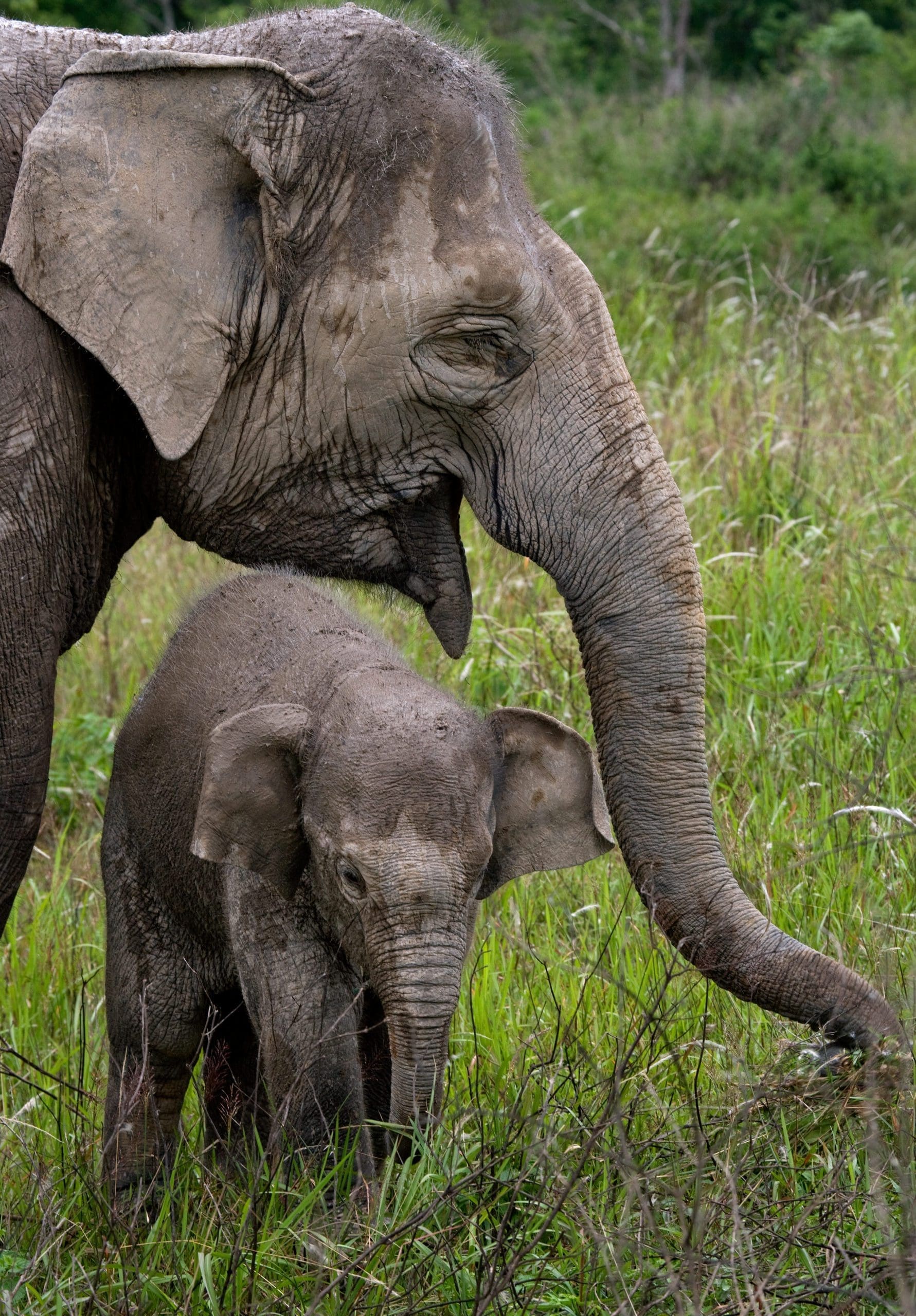
Sumatran elephants generally eat around 150 kilograms of food per day, and with the majority of this coming in the form of leaves, bark, grass and fruit, its no surprise that they spend all day eating! Females usually have very small or no tusks at all, in contrast to males.
The population of Sumatran elephants is facing a rapid decline, and as of today, only about 2000 individuals are reported to be living wild Asia. Its estimated that with such a rate of decline, Sumatran elephants will be extinct within the next 30 years.
Amur Leopard
When most think about leopards, they tend to only imagine the beautiful golden-brown cats roaming the African savannahs. But did you know, there is an extremely rare species of leopard living in the Primorye region of southeast Russia and the temperate forests of northern China – the Amur leopard.
Amur leopards were declared one of the world’s most endangered animals as there is only an estimated 90 individuals alive today.
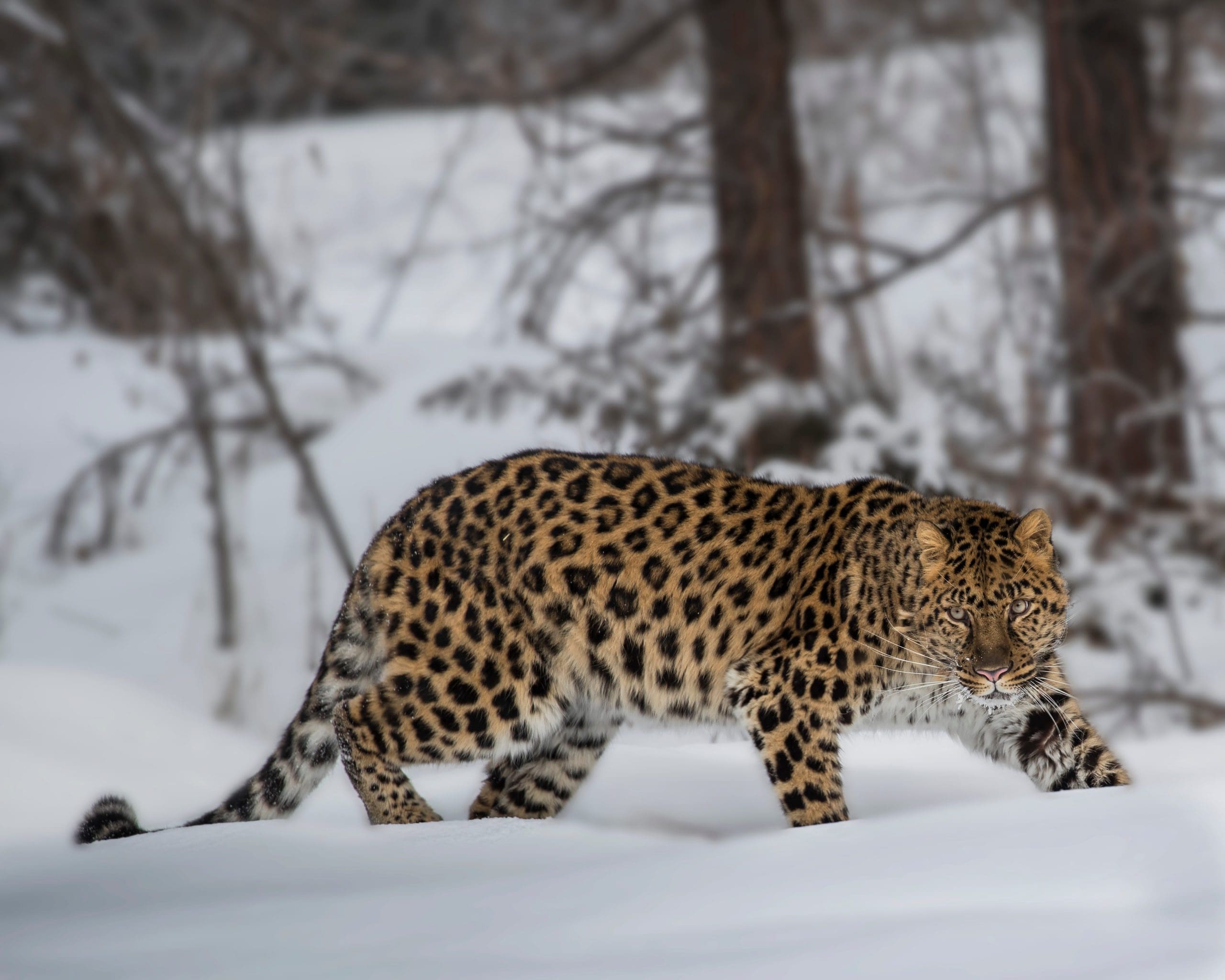
A full-grown adult Amur leopard weighs about 40 kilograms and is capable of hunting prey animals three times their size. Prey items primarily come in the form of deer, wild boar, and rabbits, which they silently approach before pouncing and suffocating their victims. They are known as “the silent killer”.
Amur leopards are incredibly well-adapted hunters that can run at speeds of up to 37km per hour, and jump 3 meters vertically and 7 meters horizontally.
Generally Amur leopards lead solitary lives, but reports have suggested instances where males help with rearing of young cubs.
Endangered Rhinoceros Species
One of the most persecuted animals of recent years, there are three subspecies of rhino on the critically endangered list. These are the Black Rhino, Javan Rhino, and Sumatran Rhino, while the remaining two species – the white rhino and the Indian rhino – are also at risk.
Black Rhino
The black rhino is the smaller of the two African species and is commonly seen in national parks in sub-Saharan countries like South Africa, Kenya, Botswana, Namibia, Tanzania and Zimbabwe.
Other than size, the most notable difference between the two is that black rhinos have a curved, hook lip compared to the flat, square-shaped lip of the white rhino. This adaptation allows them to feed on juicier leaves and bushes, rather than grasses only.
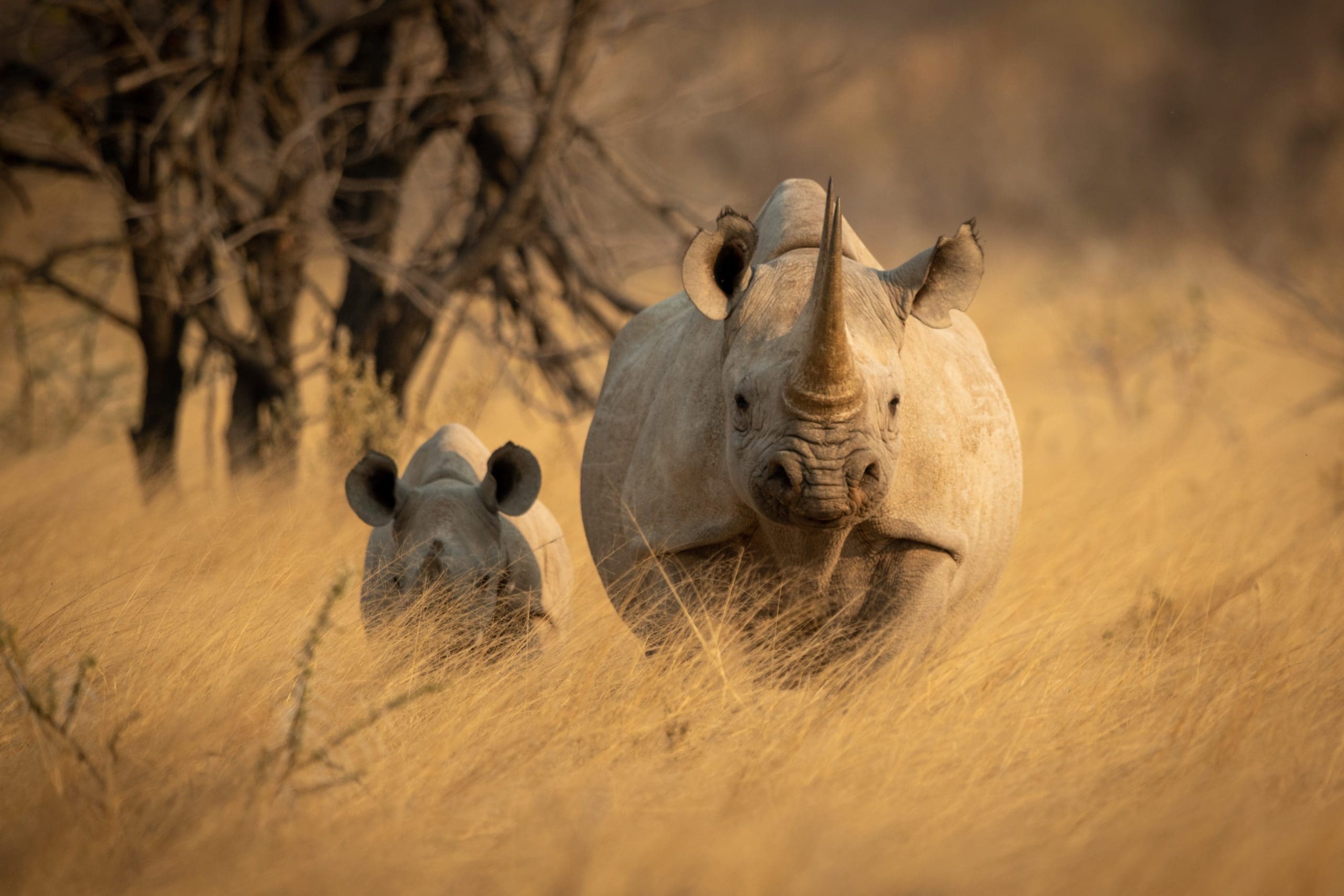
Despite being called ‘black rhinos’ their skin colour actually varies more between brown and dark grey.
Adult black rhinos grow to around 1.5 meters tall at the shoulder, and weigh more than a tonne. Females, or cows, are generally smaller than males.
At present, the black rhino population is as low as 5000 individuals.
Javan Rhino
The Javan rhino, also known as the lesser one-horned rhinoceros, is only found in Ujung Kulon National Park in Indonesia.
They are the rarest of all rhino species and are considered one of the world’s most endangered animals with less than 60 individuals alive today.
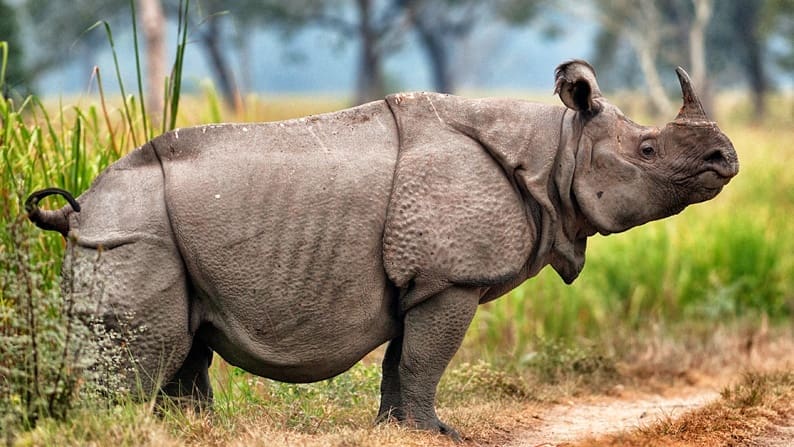
A full-grown Javan rhino stands at between 1.4 and 1.7 meters at the shoulder and weighs around two tonnes on average.
The Javan rhino boasts a smaller horn than those of other rhinos, only about 25cm long, and only males have horns.
Sumatran Rhino
The Sumatran rhino is the smallest rhinoceros species in the world and are only found on the Indonesia islands of Sumatra and Borneo.

Weighing around 750 kilograms on average, the Sumatran rhino stands at a shoulder height of 1.4 metres and features a distinctive appearance with reddish-brown wooly hair covering its skin. This appearance has led scientists to believe that this species is closely related to woolly rhinos that went extinct before the glacial period.
Today the wild population of Sumatran rhinos living in Indonesia is made up of less than 80 individuals.
Endangered Orangutan Species
The largest arboreal mammals on earth, orangutans are only found in Indonesia and are iconic for their distinctive red fur; long, powerful arms and humanlike features. Both species of orangutan are critically endangered.
Bornean Orangutan
As its name suggests, the Bornean orangutan is endemic to the island of Borneo. A population decrease of more than 50% in the last 20 years has landed the them on the list of the world’s most endangered animals.
With typical orangutan-like features, the Bornean orangutan boasts long arms covered in coarse, shaggy red hair with reddish-brown skin.
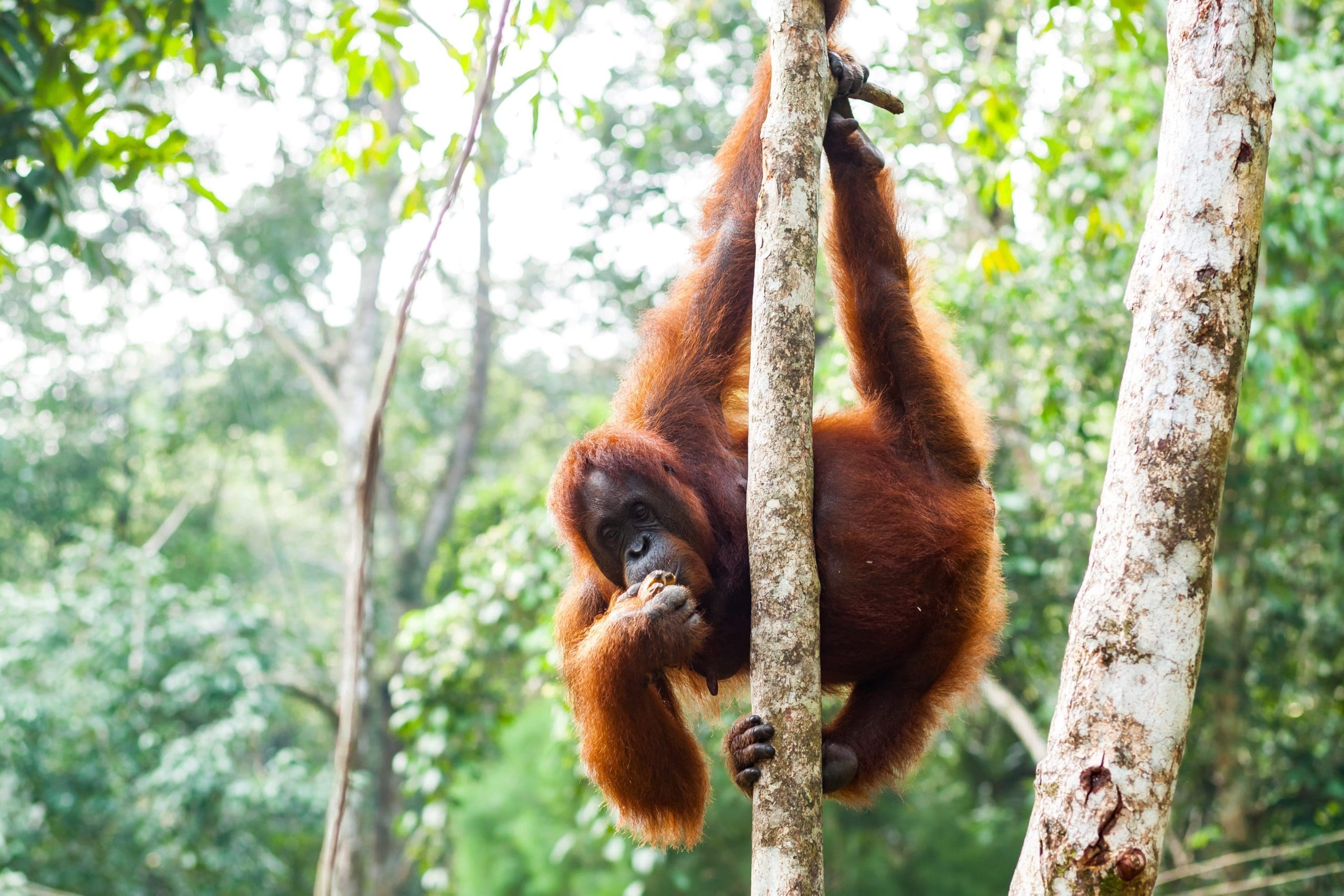
An adult male Bornean orangutan stands ar 1.5 meters tall and can weigh more than 100kg. They are extremely intelligent and share about 97% of human DNA.
Unfortunately, there are only 50,000 of these primates living in Borneo today.
Sumatran Orangutan
The third Sumatran animal subspecies on the list thus far, the Sumatran orangutan is only found in the island’s northern region.
They spend their whole lives in the trees and very rarely move along the ground, except for in extraordinary circumstances.
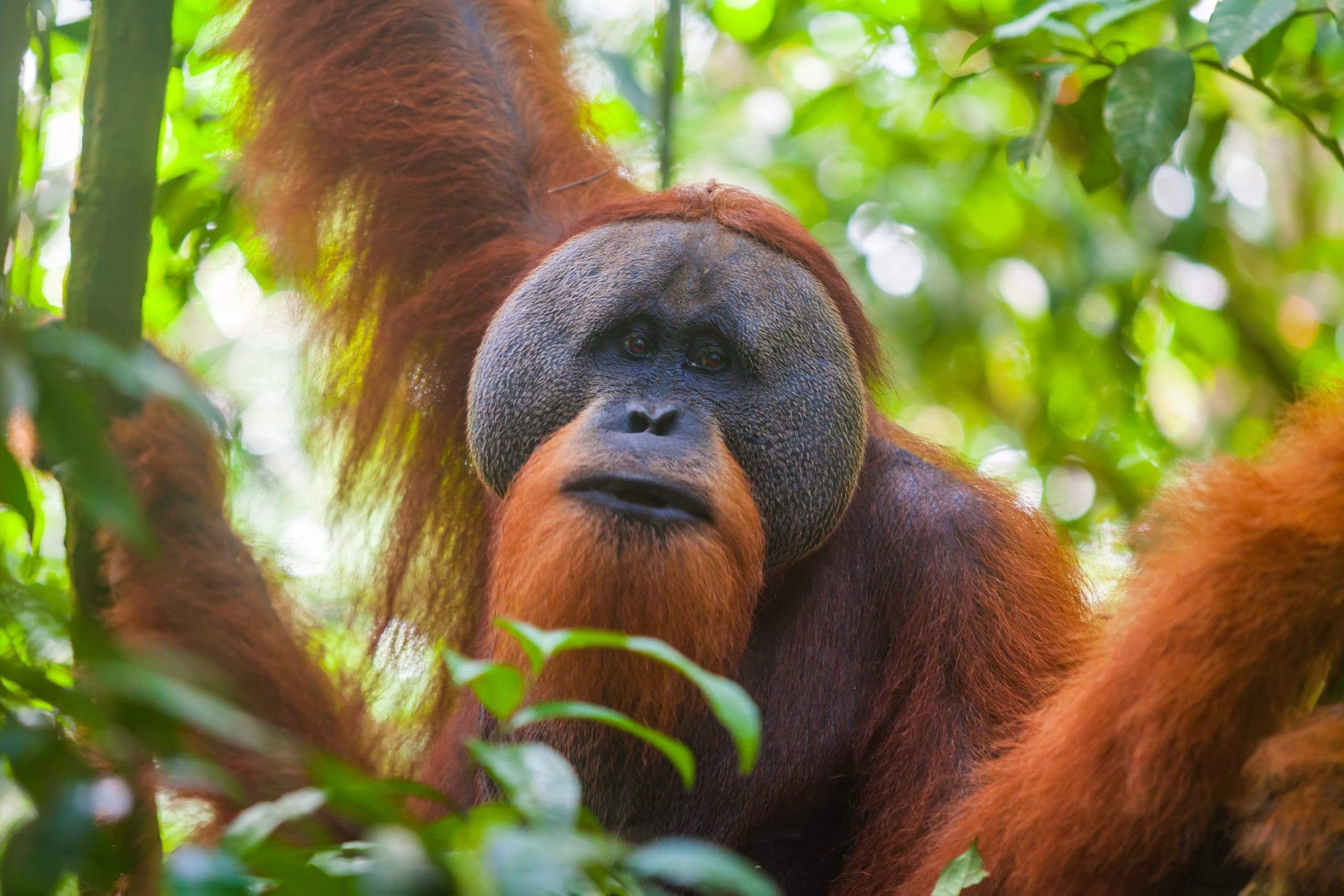
They are similar in size and appearance to Bornean orangutans, and males feature large cheek pads or flanges.
The Sumatran orangutan is one of the world’s most endangered animals with just 14,000 individuals living today.
Hawksbill Turtle
Hawksbill turtles can be found throughout the world’s tropical oceans, always near coral reefs, shallow lagoons, and estuaries.
A fully-grown hawksbill turtle is around 1 meter in length and weighs just short of 100 kilograms. They are easily distinguished from other marine turtles because of their pointed beak, and detailed shell patterning.

As omnivores, a hawksbill’s diet features quite a variety. They like to feed on sea sponges, fish, sea anemones, jellyfish, and sea plants.
The main threats facing hawksbill turtles are humans, who are destroying habitat, using shells for ornaments and ‘hunting’ sea turtles for food. Today their are only around 25,000 nesting female hawksbill turtles living in our oceans.
Saola
The saola, which is also known as the Asian unicorn, is one of the world’s rarest animals and is found nowhere other than forested areas of the Annamite Range in Vietnam and Laos.
They are an incredible sight, discovered by the forest ecologist Do Tuoc in 1992 and last photographed in the wild in 2013.
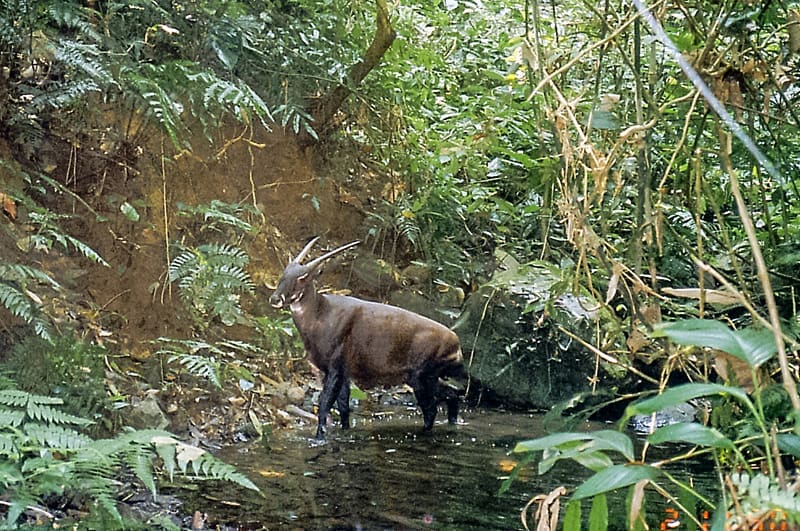
A large saola will weigh around 100kg, and their most distinctive feature is their horns. Evident on both males and females, a saola’s horns grow up to between 30-50 cm long.
Very little is known about the saola, including population size and feeding habits.
Endangered Gorilla Species
Eastern Lowland Gorilla
The eastern lowland gorilla, is also known as the Grauer’s gorilla and is most commonly found in forested mountain regions of eastern Congo. They can also be spotted in the Kahuzi-Biega National Park, Maiko National Park, Tayna Gorilla Reserve, and the Usala forest.
A full-grow eastern lowland gorilla will can grow to more than 1.6 meters in height and weigh between 80 and 200kg, dependant on gender.
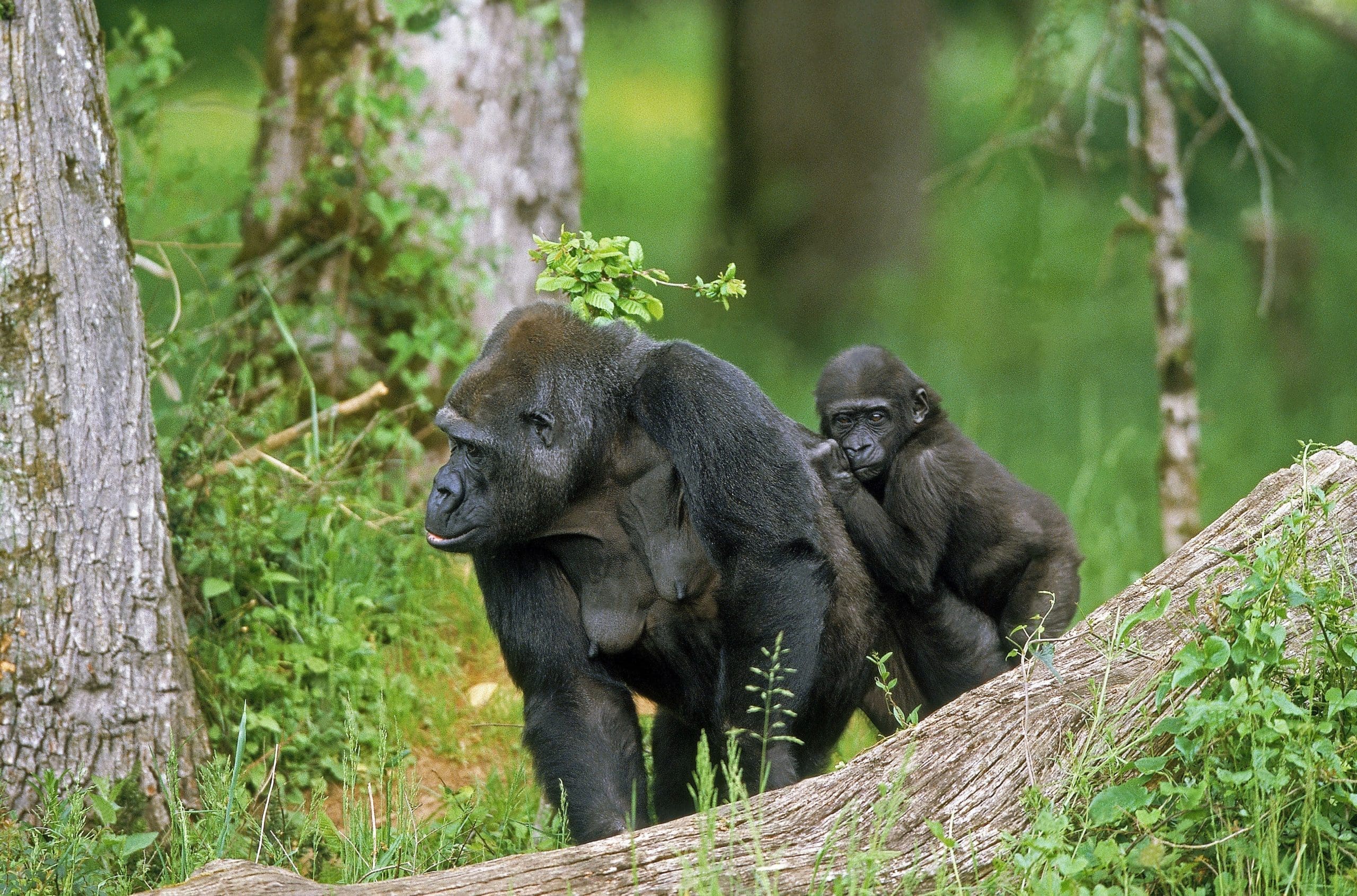
Their coat is made up of short, jet black hairs, which slowly start to grey as they age. This is most evident in dominant silverback males. Their diet primarily consists of fruit and leaves.
Reports suggest that there are less than 4000 Eastern lowland gorillas alive in the wild today, which makes them one of the world’s most endangered animals.
Western Lowland Gorillas
The western lowland gorilla is a subspecies of western gorillas, commonly found in the Congo, Cameroon, Angola, Equilateral Guinea, and Gabon.
They are much smaller than the other gorilla species, with a mature adult standing between 1.5-1.7 meters tall and weighing 120kg on average.
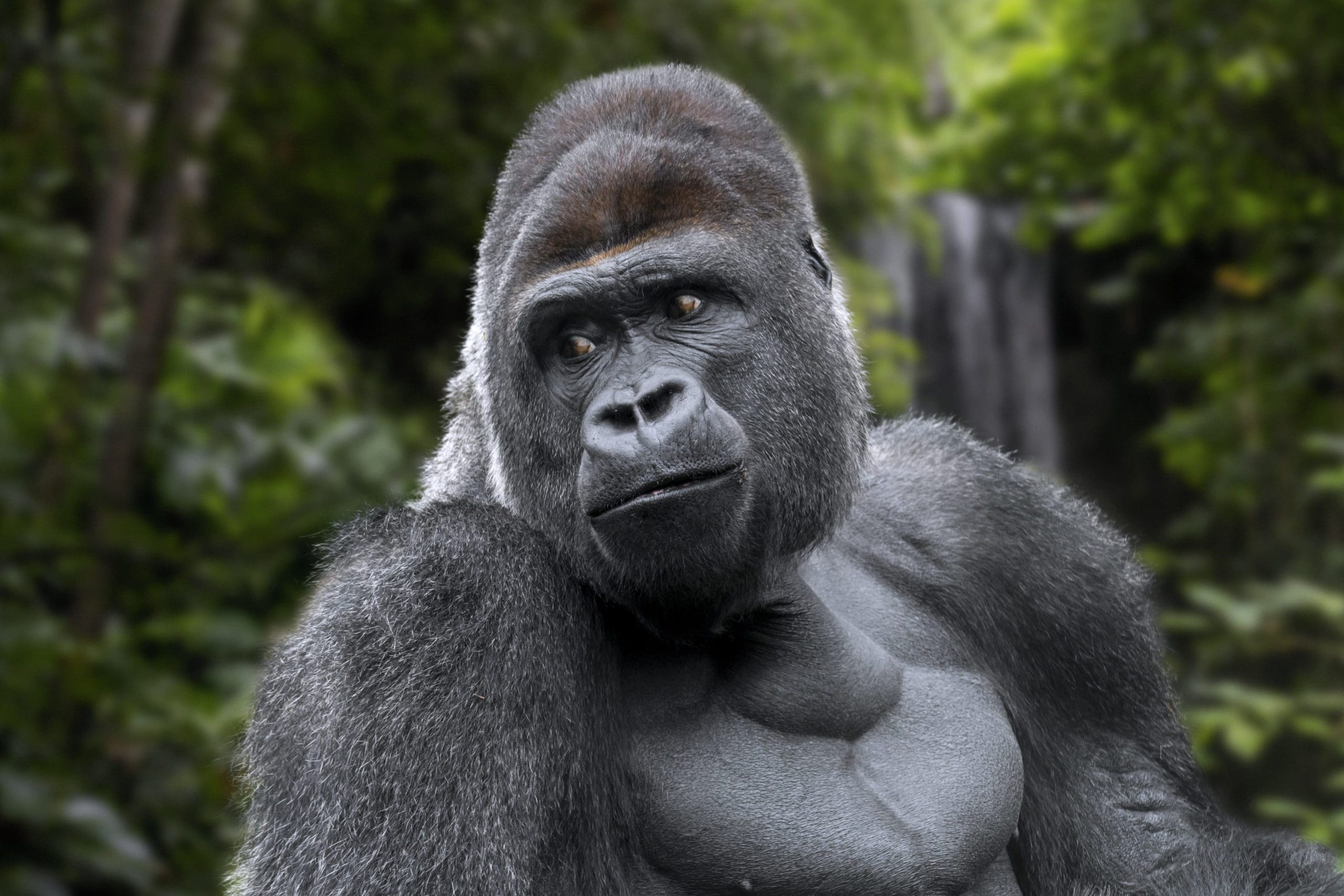
They share the same jet black hair as the eastern lowland gorilla, with adult males displaying an impressive silver back. They have no tail and hair doesn’t grow on their face, ears, hands or feet.
They prefer a diet made up of roots, tree bark and fruit during the wet season. Although the exact number of western lowland gorillas is currently unknown, it is estimated to be only slightly more than eastern species.
Cross River Gorillas
The Cross River gorilla was discovered by Paul Maschie in 1904, and is another subspecies of Western gorilla. They can be seen in forested areas on the Cameroon-Nigeria border and along the Cross River.
When compared to Western lowland gorillas, they are very small and have shorter skulls. An adult Cross River Gorilla stands at just 1.5 meters tall on average and weights between 100 and 200kg.
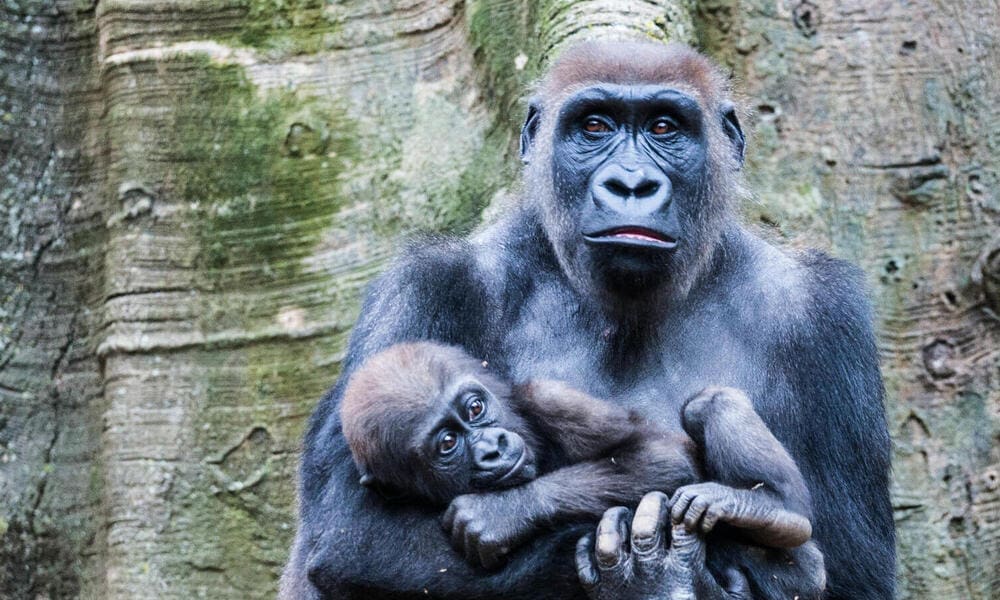
Cross River gorillas live in small family groups with both males and females cohabitating permanently.
They live on a diet of fruit, tree bark and leaves and are considered to be one of the world’s most endangered animals with less than 300 individuals living in the wild.
Sunda Tiger
The Sunda, or Sumatran Tiger is found nowhere else other than the island of Sumatra.
Their appearance differs slightly from that of other tigers, with an overall smaller body, dark orange fur and stripes closer together than normal.
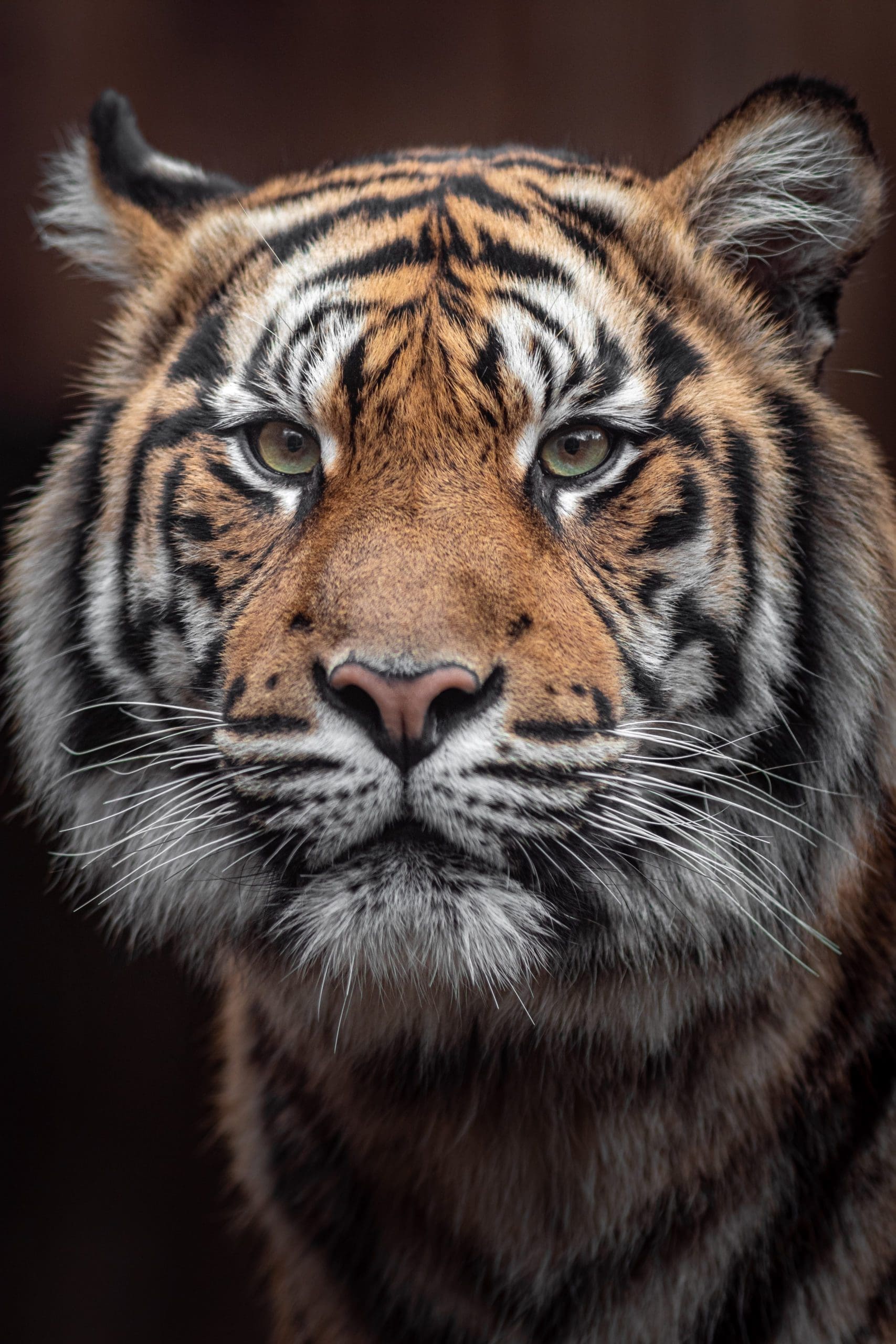
These big cats cover vast areas of land in search of prey, sometimes more than 30km, but are impressive hunters when the opportunity arises. They are capable of reaching speeds of up to 64km at full sprint and feed on a variety of prey items like deer, wild boar, monkeys and even fish.
With less than 300 individuals living in the wild today, the Sunda Tiger is another Sumatran species on the list of the world’s most endangered animals.
Endangered Porpoise Species
Porpoises are lesser-known cousins of whales and dolphins. They are fully aquatic mammals, with a more dolphin like appearance due to their humble size. There are currently two species of porpoise on the critically endangered list.
Yangtze Finless Porpoise
The Yangtze finless porpoise is a species of freshwater, toothed whale found in the Yangtze River in China.
Yangtze finless porpoises are black when young and gradually lighten up as they get older. A fully grown Yangtze porpoise averages at around 1.6m long.
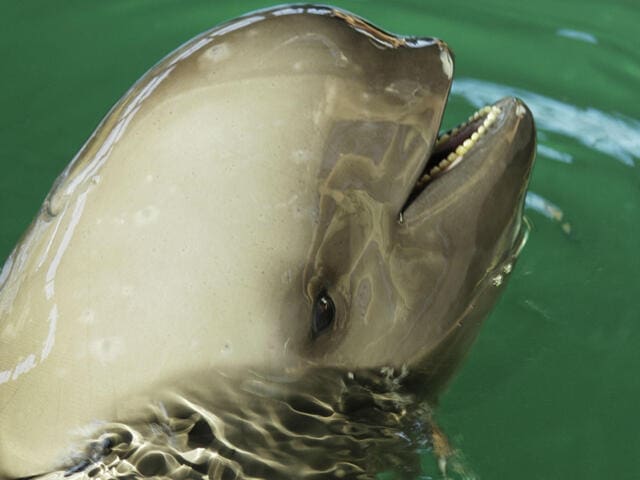
They are classified as cetaceans because they have between 15 and 22 pairs of teeth. Their diet includes other fish species like Pseudobrama simoni and Coilia brachygnathus.
By nature the Yangtze finless porpoise is quite a shy creature and is usually seen in groups of 4 to 6. They are declared critically endangered with fewer than 1000 individuals alive today.
Vaquita
The Vaquita is one of the rarest marine animals on earth – so much so that you probably haven’t even heard of it! They are most commonly spotted on the northern end of the Gulf of California in Mexico.
Vaquitas are mostly grey, with a dark ring around their eyes. This distinguishes them from other porpoise species.
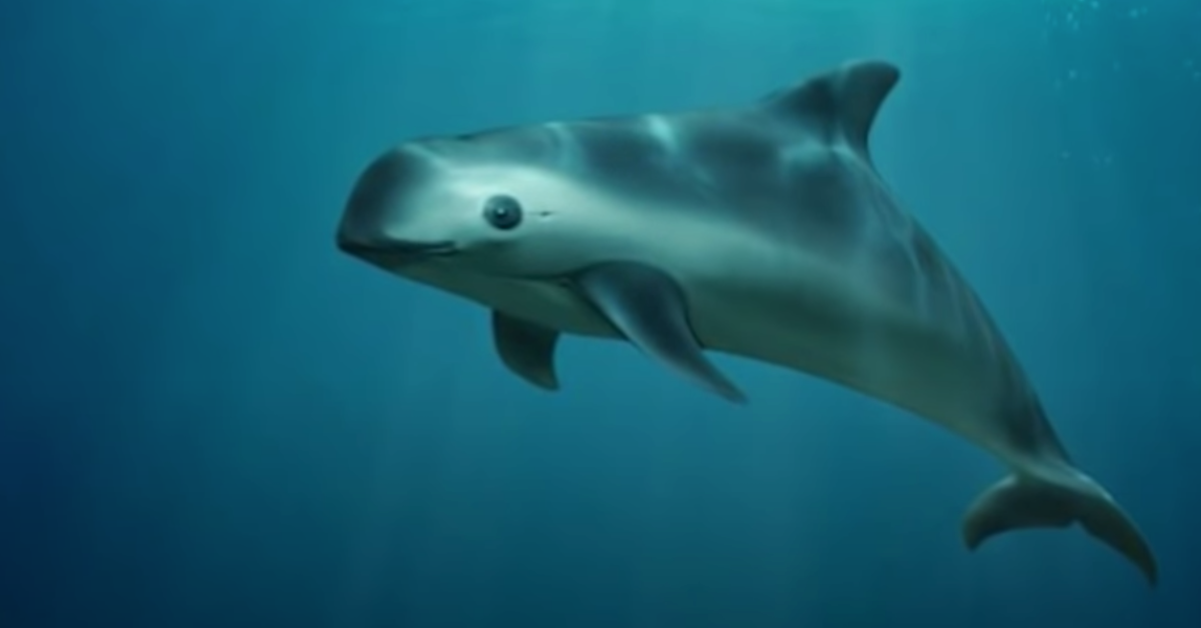
A mature Vaquita will only grow to 1.4-1.5m in length, making them the smallest living cetaceans in the world. They are also quite shy and are never seen alone. They generally live in pairs or in groups of up to 10 members.
They were only discovered as recently as 1950, and in a very short space of time we have come to the verge of losing them forever. A 2007 report stated that there were 150 vaquitas living in the wild, but recent unauthorised fishing operations have decimated the population and there are now only 10 individuals remaining in the wild. This makes them the most endangered known animal on earth.
